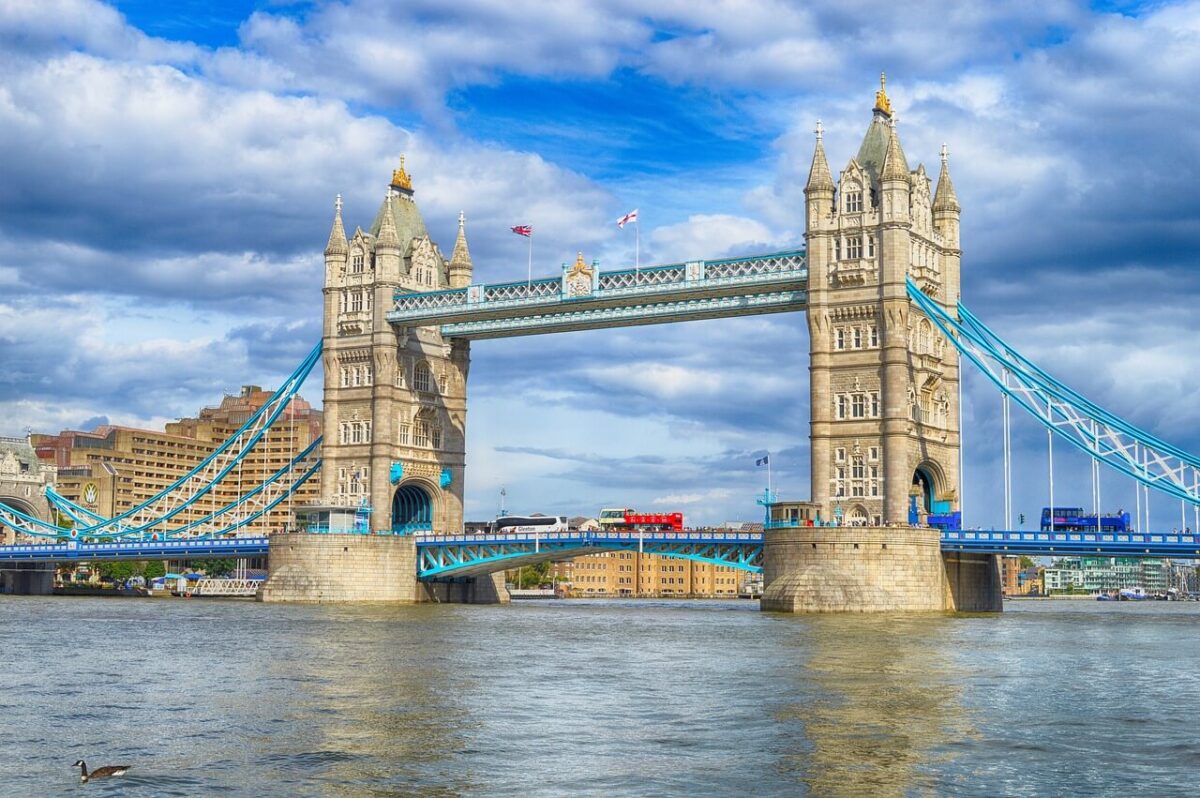London Calling
This is actually the first post on this blog. The choice of what to write about first was simple. It’s about the places to see in London.
If one phrase comes to my mind that could describe London, it would be a splendid mix.
A mix of incredible history and modernity. Then a mix of diverse people and cultures. Finally, a mix of astonishing places and experiences.
Yet then, a mix of those three and perhaps more that I could add.
Anyway, London offers a lot. Much more that I can contain in this list of places I recommend to see.
But maybe it’s a good start and good input for your own list of places to see in London.
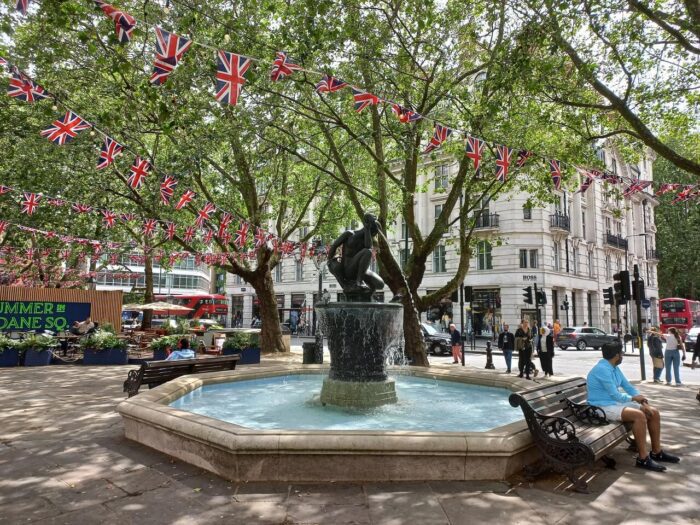
About London
“London itself perpetually attracts, stimulates, gives me a play and a story and a poem, without any trouble, save that of moving my legs through the streets.”
Virginia Woolf, Mrs Dalloway
London is a city that gracefully blends the old and the new, inviting you into its diverse embrace.
With famous landmarks like the Tower of London and Westminster Abbey, the city unfolds its rich history. With The Shard and The Gherkin in turn, it shows its modern face.
London stands out for its green spaces, boasting more than any other major city globally. From the expansive Hyde Park to the serene Kyoto Garden, nature lovers will find a haven.
The River Thames, winding through the heart of the capital, is more than just a waterway – it’s a living history, with over 200 bridges linking vibrant neighborhoods.
London’s cultural diversity shines not only in its cuisine but also in the daily use of over 300 languages.
Take a journey through the nuanced layers of London, where each street corner has a story, and every neighborhood offers a unique blend of tradition and modern charm.
London Travel Guides at AmazonMy list of places to visit in London
Here’s my list of top places to see in London (in alphabetical order).
Borough Market
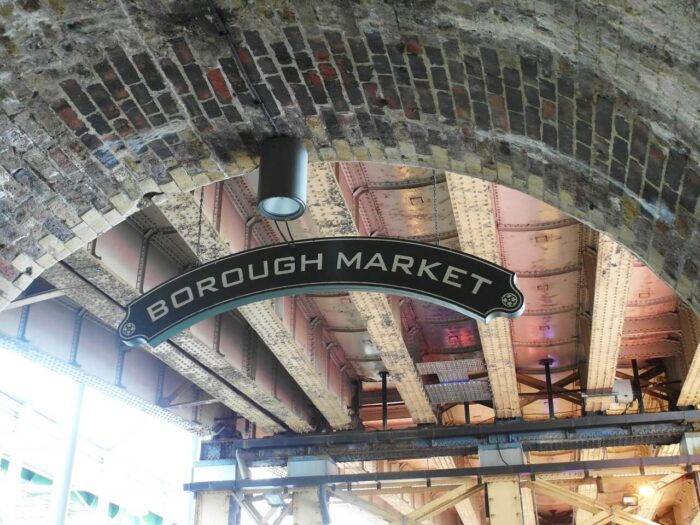
Did you know…?
This lively market has been used as a setting for various cinematic productions, bringing a touch of fame to its bustling ambiance.
The energetic stalls and genuine surroundings have appeared in well-known films and TV shows (like Bridget Jones’s Diary or Harry Potter and the Prisoner of Azkaban), transforming it into more than just a destination for food enthusiasts – it’s a hidden gem for those interested in pop culture.
Visitors may discover themselves standing on the same cobblestone streets where iconic scenes were filmed, adding an additional layer of fascination and enthusiasm to their Borough Market experience.
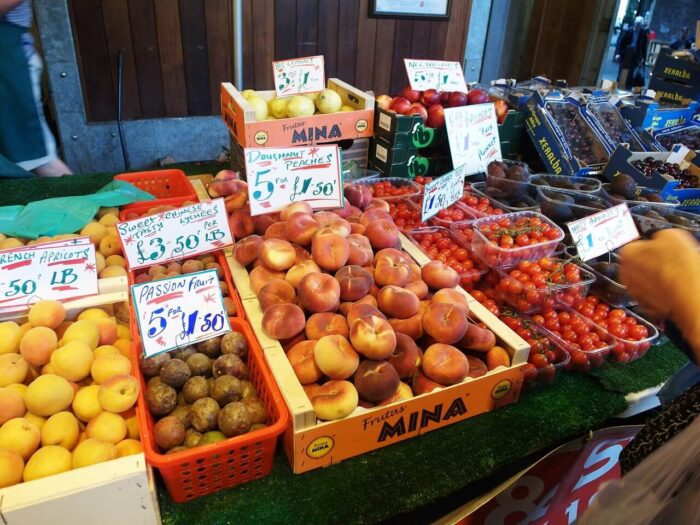
What is Borough Market and why see it?
Borough Market, located not far from Southwark Cathedral and the Shard, stands as a venerable food market with roots reaching back to the 12th century.
Renowned for its historical significance, this culinary hub has evolved into a beloved destination for both locals and tourists alike.
It boasts a captivating array of international and local gastronomic delights, ranging from fresh produce to exquisite cheeses, meats, and unique specialty ingredients.
Borough Market’s allure lies not only in its rich history but also in its commitment to offering high-quality, ethically sourced products, providing a unique culinary experience.
The market’s lively ambiance, surrounded by iconic landmarks, further enhances its appeal, creating an atmosphere that beckons exploration.
Beyond the palate, Borough Market’s active engagement in sustainability initiatives underscores its importance, aligning with contemporary concerns about food waste.
In essence, Borough Market encapsulates the essence of London’s diverse culinary landscape, historical heritage, and dedication to quality, making it an indispensable stop for those seeking an authentic and immersive market encounter in the heart of the city.

How to enjoy Borough Market?
Getting to Borough Market is convenient for tourists due to its central location in London. It is situated near prominent landmarks such as Southwark Cathedral and the Shard.
The market is easily reachable via public transportation, with London Bridge station just a short walk away.
To make the most of the visit, it is recommended for tourists to plan their trip on weekdays or during early mornings to avoid larger crowds, ensuring a more leisurely exploration of the diverse stalls. However, peak hours visit to Borough Market is a different yet recommendable experience too.
Tourists can enhance their experience by sampling a variety of offerings, interacting with local vendors, and immersing themselves in the lively atmosphere.
Visit Borough Market to fully appreciate the authentic culinary delights and cultural richness of this iconic London destination.
Camden Town
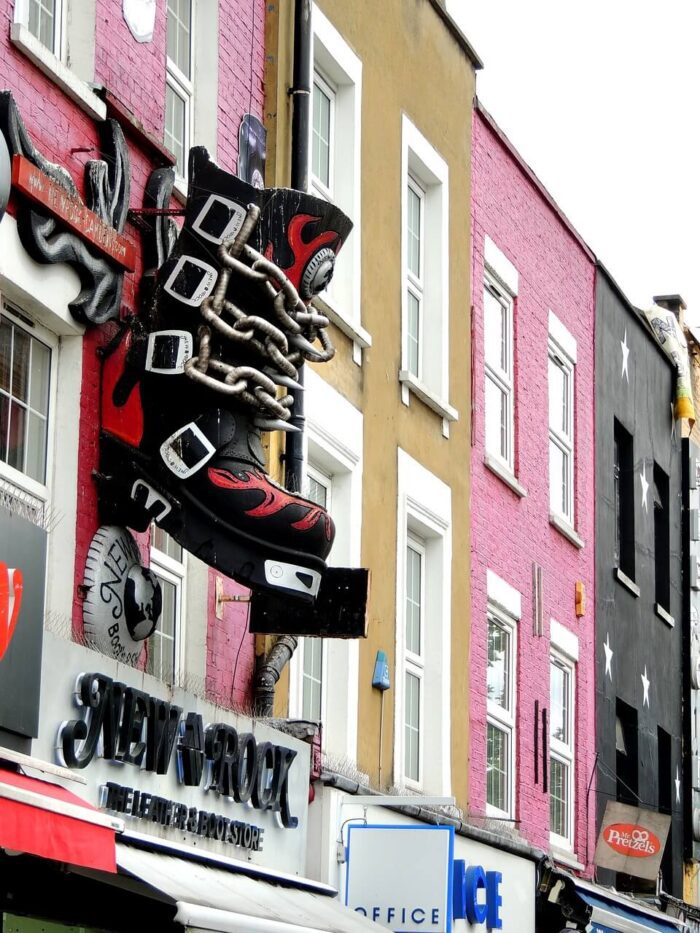
Did you know…?
Camden Town is associated with a network of subterranean tunnels and passageways beneath the market area.
Originally constructed as stables and horse tunnels in the 19th century, these hidden spaces now add an intriguing layer to Camden’s history. They offer a glimpse into its past as a bustling hub for horse-drawn transportation.
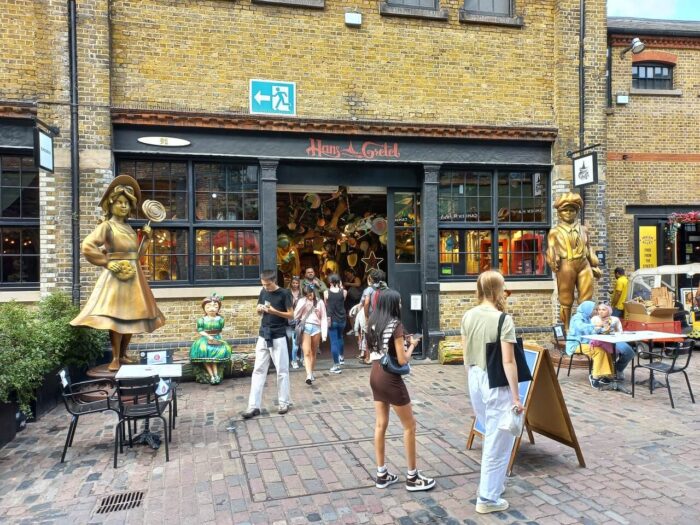
What is Camden Town and why see it?
Camden Town stands out as a vibrant and well-known neighborhood, celebrated for its distinctive character and rich cultural ambiance.
Its focal point is the renowned Camden Market, a fusion of alternative fashion, arts, and crafts.
Camden enjoys a notable place in musical history, notably during the punk and Brit pop movements.
In addition to its bustling markets and historic music venues like the Electric Ballroom and the Roundhouse, Camden offers a tranquil escape along Regent’s Canal, providing a serene respite from the city’s hustle.
With its diverse and artsy atmosphere, Camden Town warmly welcomes creatives, music enthusiasts, and those seeking a glimpse of London’s alternative essence.
It is undeniably a must-see place in London, captivating visitors with its charismatic charm and cultural significance, offering an immersive experience that goes beyond mere exploration, inviting individuals to stroll through its winding paths, uncover hidden gems, and absorb the unique energy that defines Camden Town as an integral part of London’s cultural tapestry.
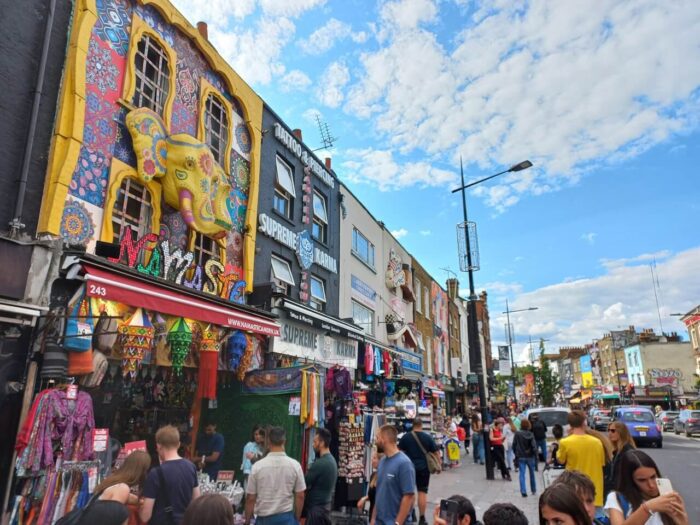
How to enjoy Camden Town?
Getting to Camden Town is easy because it has good public transport links, and the Camden Town tube station is a central point.
It’s a good idea to arrive early on weekends to avoid crowds, especially in the busy Camden Market.
While you explore, take your time on the winding streets and alleys because hidden gems are often found away from the main paths.
Get ready for a mix of experiences, from the smells of different foods to the sounds of street performers.
Camden is a great place to find unique items, so keep an eye out for handmade crafts and vintage treasures.
Talking to local vendors and artists can add to your experience by giving you insights into the neighborhood’s creative atmosphere.
Lastly, take a leisurely walk along Regent’s Canal for a peaceful break from the lively streets. It’s a chance to enjoy Camden’s diverse charm at a slower pace.
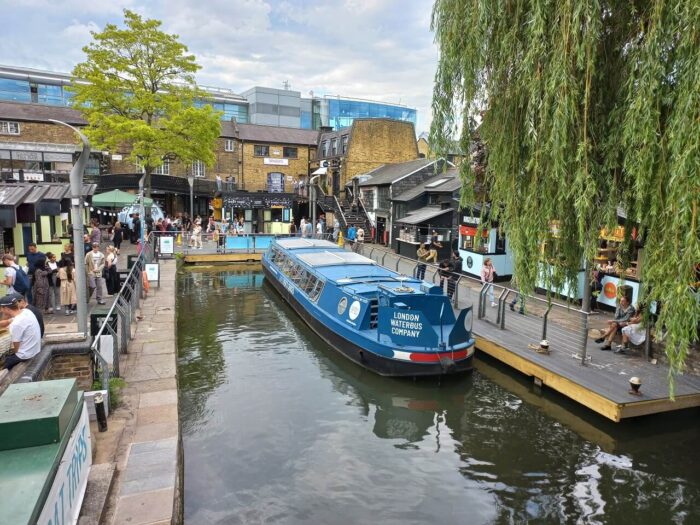
Covent Garden
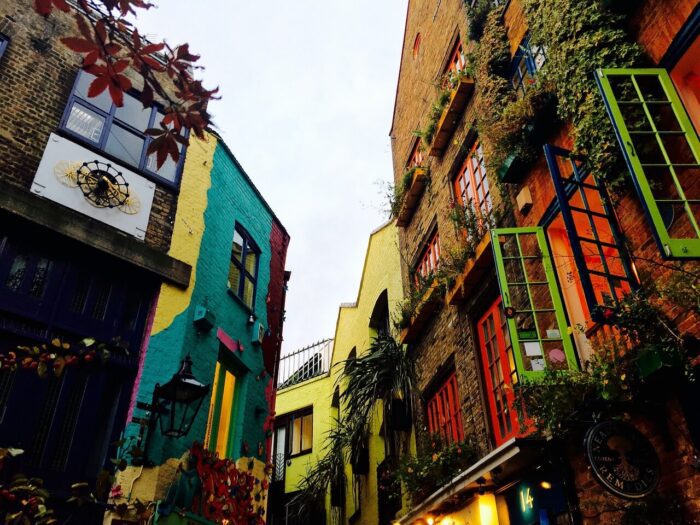
Did you know…?
Hidden beneath the vibrant façade of Covent Garden lies a secret passage to the past—a network of underground tunnels dating back to the 17th century.
These tunnels, once bustling with the commerce of the market, have a more secret history as well.
During the 18th century, they served as escape routes for smugglers evading authorities along the Thames.
Today, while many of these passageways remain sealed off, the echoes of their secretive past add an unexpected layer of intrigue to the lively streets above
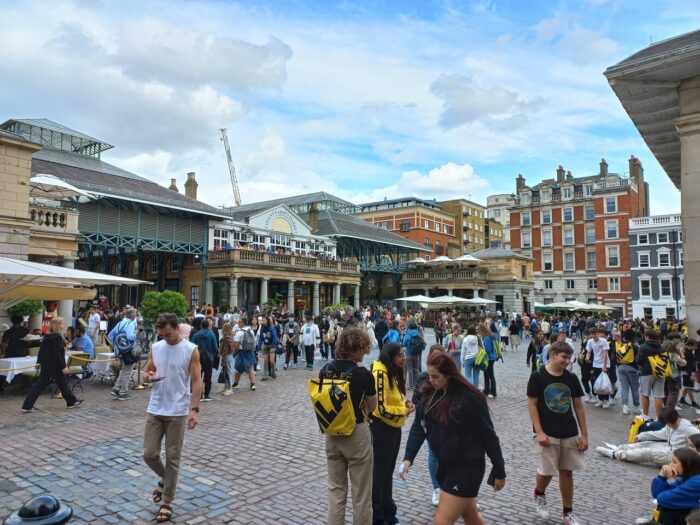
What is Covent Garden and why see it?
Covent Garden, located in the heart of London’s West End, is a historic and vibrant district renowned for its unique blend of culture, entertainment, and commerce.
What makes Covent Garden special is its rich history dating back to the 17th century when it was initially designed as a fruit and vegetable market.
Today, it has evolved into a bustling hub featuring a diverse array of shops, restaurants, and theaters.
The iconic Covent Garden Market, surrounded by elegant piazza, stands at the center, offering an eclectic mix of artisanal crafts, fashion boutiques, and gourmet delights.
Beyond its commercial aspect, Covent Garden is a cultural hotspot, hosting street performances, live music, and art exhibitions.
Its historic architecture, including landmarks like St. Paul’s Church, adds to the district’s unique charm.
Visitors are drawn to Covent Garden not only for its shopping and dining experiences but also for its lively atmosphere and cultural richness, making it a must-visit destination in London.
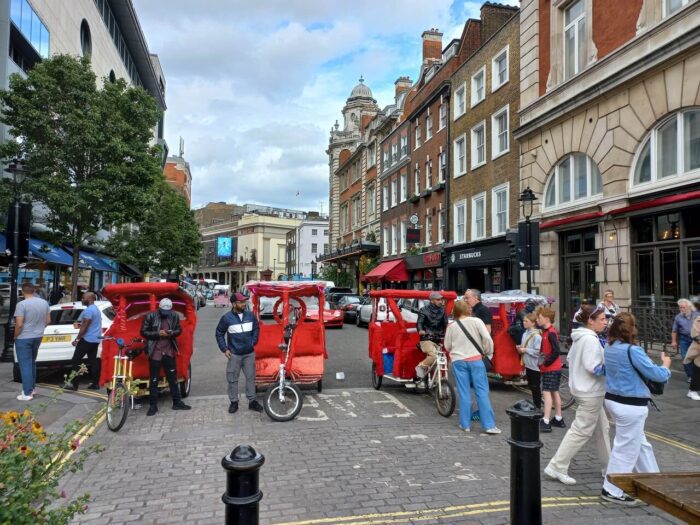
How to enjoy Covent Garden?
The Covent Garden tube station, served by the Piccadilly Line, provides direct access to the area.
Alternatively, one can enjoy a leisurely walk from nearby attractions such as Trafalgar Square or Leicester Square.
However, it’s essential for visitors to be mindful of the bustling crowds, especially during peak hours, and exercise caution while navigating the vibrant streets.
Additionally, Covent Garden’s popularity means that restaurants and shops can get crowded, so it’s advisable to plan visits during weekdays or off-peak hours for a more relaxed experience.
Exploring the district on foot is highly recommended to appreciate its hidden corners and unique charm.
To make the most of the Covent Garden experience, tourists should allocate time for spontaneous street performances, explore the historic market halls, and savor the diverse culinary offerings.
Being aware of one’s surroundings, embracing the lively atmosphere, and allowing for flexibility in the itinerary will ensure a memorable and enjoyable visit to this iconic London destination.
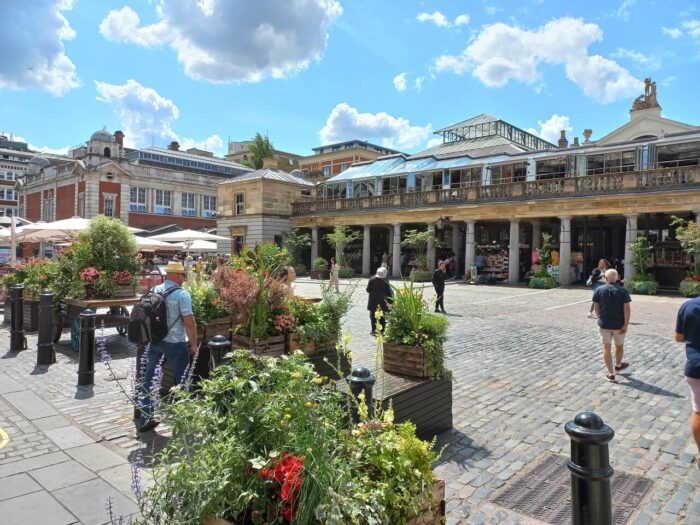
City of Westminster
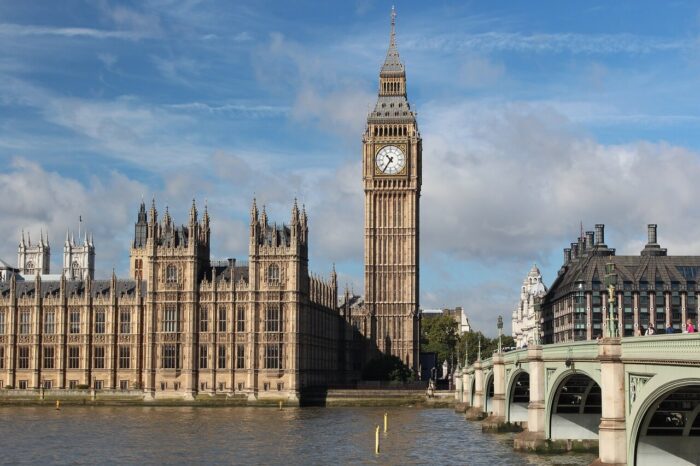
Did you know…?
City of Westminster is not only the historic heart of London.
You can also find there a place called Little Venice, a serene area featuring canals and houseboats that offer a peaceful escape from the city’s hustle and bustle.
This charming spot provides a tranquil setting for a leisurely stroll along the water, complemented by waterside cafes, adding a touch of idyllic beauty to the vibrant urban environment.
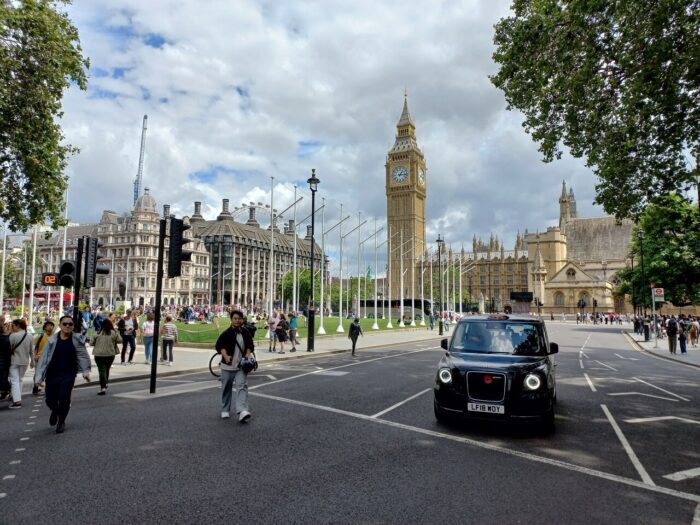
What is City of Westminster and why see it?
The City of Westminster is celebrated for its profound historical and cultural importance, boasting iconic landmarks such as the Houses of Parliament, Buckingham Palace, and Westminster Abbey.
Serving as a pivotal hub in the political and ceremonial life of the United Kingdom, this borough captivates visitors with notable architectural attractions like St. James’s Park and the renowned Big Ben.
Moreover, Westminster is home to world-class museums, including the National Gallery and the Tate Britain, offering a culturally enriching experience.
The City of Westminster’s mix of history, architecture, and cultural offerings makes it an alluring destination, allowing visitors to immerse themselves in the essence of London’s past and present.
From the changing of the guard at Buckingham Palace to leisurely strolls in St. James’s Park, the City of Westminster offers a diverse and engaging experience, encapsulating the multifaceted allure of London for all its visitors.
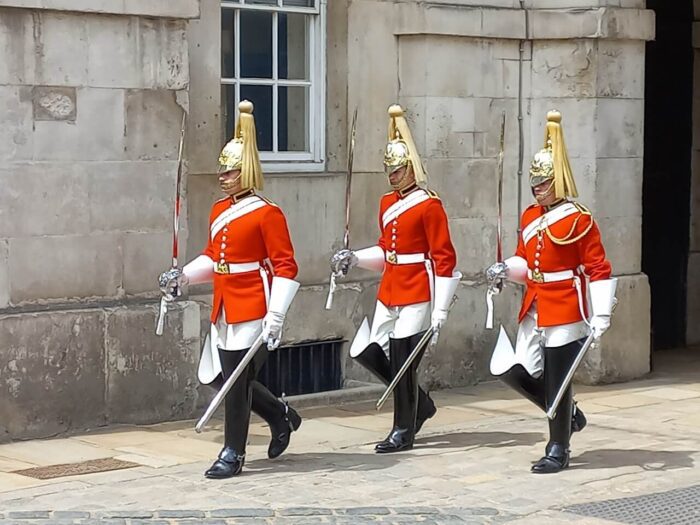
How to enjoy City of Westminster?
Tourists can easily reach the borough using public transportation, with accessible Underground stations like Westminster, Victoria, and St. James’s Park. Numerous bus routes provide a scenic view of the city along the way. Especially, if you take the top deck of a bus.
You should also be mindful of weather conditions, especially when exploring outdoor spaces, and dress appropriately.
Exploring the City of Westminster on foot allows for a more intimate connection with its historic streets and hidden gems, providing a deeper and more immersive experience for those eager to uncover the borough’s true essence.
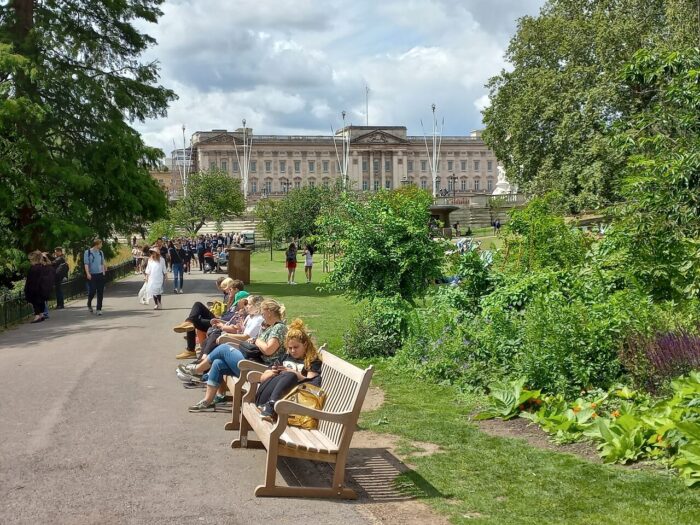
Docklands
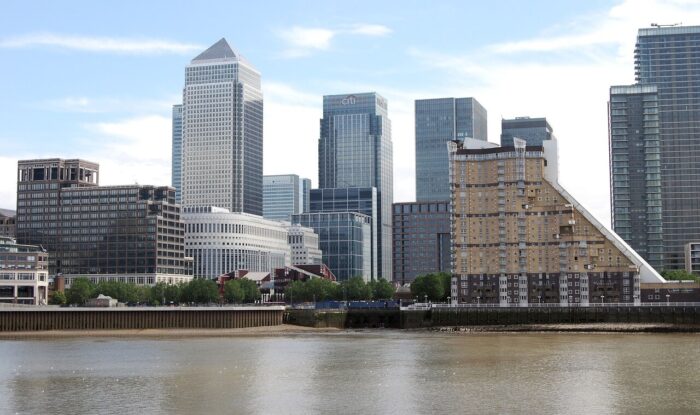
Did you know…?
A wharf (WareHouse At the River Front), in maritime terms, refers to a structure built along the shoreline or waterfront, serving as a docking and loading/unloading area for ships and boats.
Wharves play a crucial role in maritime trade, offering a designated space for vessels to load and unload diverse commodities, from containers and bulk cargo to passenger embarkation and disembarkation.
The term “wharf” encompasses a range of structures, from simple wooden piers to more complex facilities equipped with modern loading equipment.
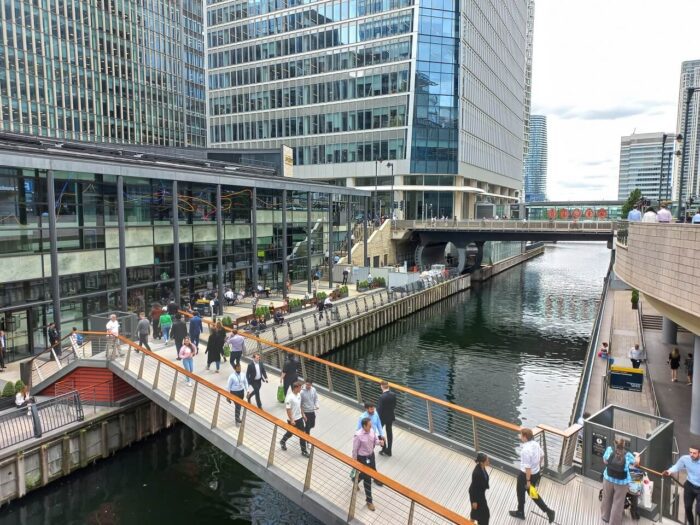
What is London Docklands and why see it?
London Docklands, located along the Thames River, is a distinctive area characterized by a juxtaposition of modernity and historical significance.
Once a thriving hub of international trade and shipping, the Docklands underwent a transformative regeneration in the late 20th century, evolving into a dynamic business and residential district.
This transformation is evident in the striking architecture of contemporary skyscrapers, juxtaposed against remnants of historic warehouses and docks.
The area’s uniqueness lies in its ability to seamlessly blend historical maritime heritage with modern urban development.
Visitors to London Docklands can explore iconic landmarks such as Canary Wharf, known for its impressive skyline and financial institutions, as well as historical sites like the Museum of London Docklands, offering insights into the area’s rich maritime past.
The presence of waterside restaurants, cultural venues, and scenic walks along the riverbanks make London Docklands a special destination, appealing to those interested in history, modern architecture, and the vibrant evolution of urban landscapes.
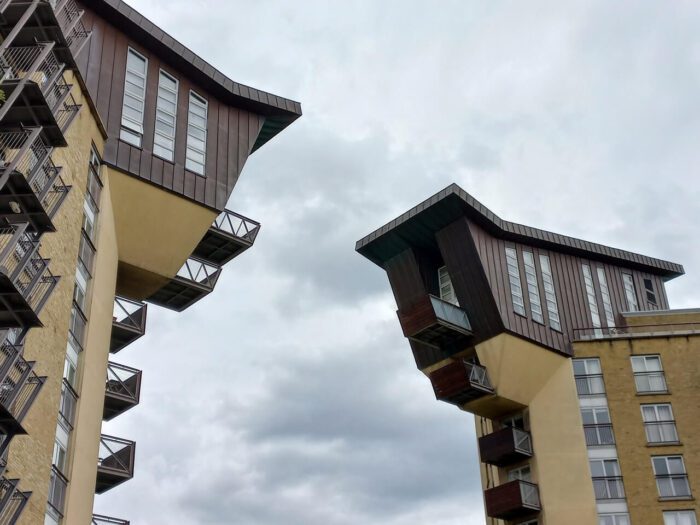
How to enjoy London Docklands?
The Docklands Light Railway (DLR) provides direct access, with key stations including Canary Wharf and Bank. Additionally, the Jubilee Line connects central London to Canary Wharf.
Upon arrival, being aware of the extensive walking areas and pedestrian-friendly zones allows tourists to explore the waterfront and take in the scenic views.
To maximize the experience, taking a stroll along the Thames Path, exploring the vibrant Canary Wharf district, and delving into the historical exhibits at the Museum of London Docklands are recommended.
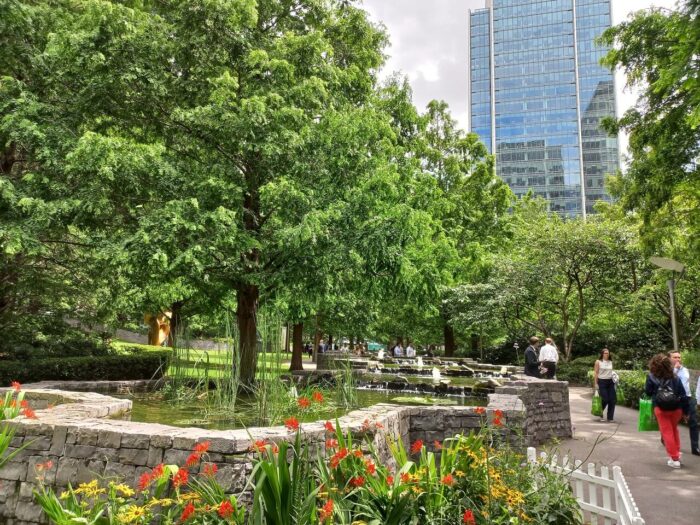
The Regent’s Park
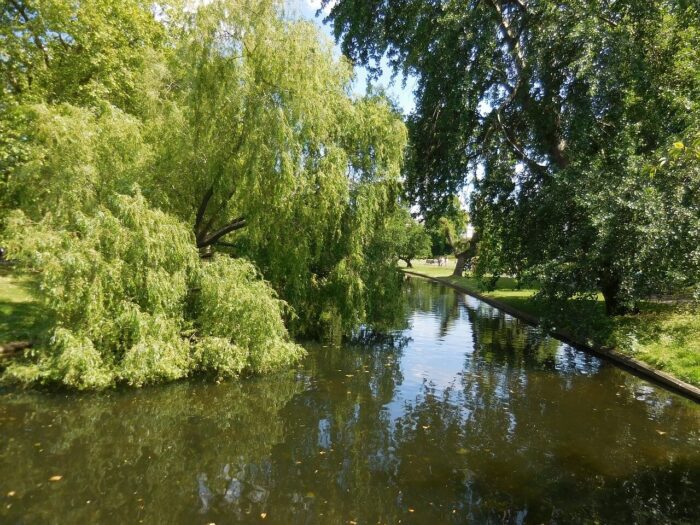
Did you know…?
The Regent’s Park played an important role in the history of sports, particularly cricket.
In the early 19th century, The Regent’s Park was home to the first cricket ground in London. Established in 1811, the Regent’s Park cricket ground hosted numerous matches and became a popular venue for cricket enthusiasts.
While the cricket ground is no longer active, its historical significance adds an interesting layer to The Regent’s Park, showcasing its diverse past beyond being a picturesque green space.
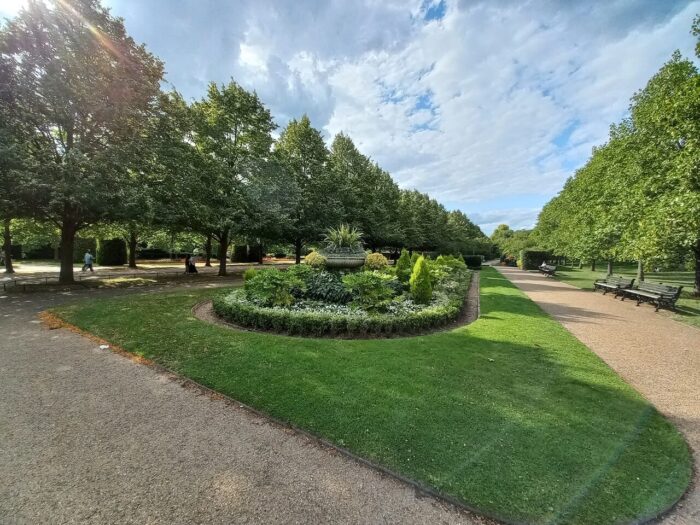
What is The Regent’s Park and why see it?
The Regent’s Park, spanning 166 hectares (410 acres), seamlessly blends natural beauty with historical significance.
Established in 1811, it stands as an iconic Royal Park, a testament to John Nash’s visionary design.
Boasting lush greenery, vibrant flower displays, and a scenic lake, the park serves as a tranquil retreat from urban life.
Notable features include Queen Mary’s Gardens with its 12,000 roses, the esteemed Open Air Theatre, and the renowned London Zoo.
Meticulous landscaping, recreational amenities, and cultural sites make it a cherished destination for both locals and visitors, offering a diverse experience that harmoniously combines tranquility, history, and recreation.
The Regent’s Park beckons visitors to enjoy leisurely strolls along winding paths, appreciate well-maintained gardens, and relax by the boating lake.
Beyond its physical features, The Regent’s Park fosters an emotional connection, providing a space to unwind in nature’s beauty, discover peace in tranquil landscapes, and connect with the timeless charm of historic architecture, making it an immersive sanctuary for the heart and mind.
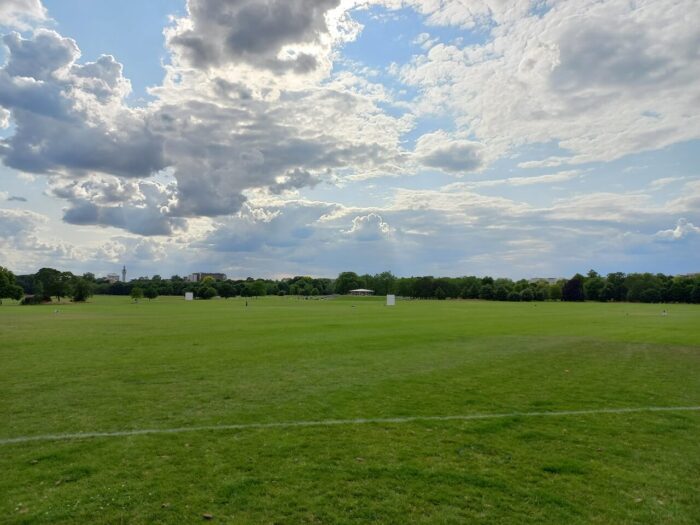
How to enjoy The Regent’s Park?
To reach The Regent’s Park, tourists can easily use London’s well-connected public transportation, with Baker Street and Regent’s Park Underground stations providing convenient access. Various bus routes also serve the park.
It’s advisable for visitors to wear comfortable shoes as the park is extensive. Checking the weather beforehand and bringing suitable clothing (and an umbrella) is important due to London’s unpredictable climate.
To maximize the experience, consider using a map or navigation app to explore the diverse attractions. Don’t miss Queen Mary’s Gardens, the Open Air Theatre, and the London Zoo.
Bringing along a picnic or snacks to enjoy in one of the park’s scenic spots can further enrich the experience, allowing tourists to fully appreciate the charm and tranquility of The Regent’s Park.
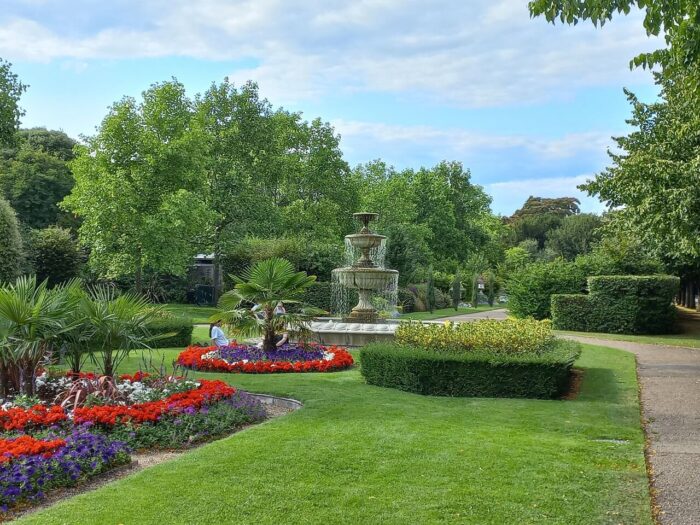
The Shard
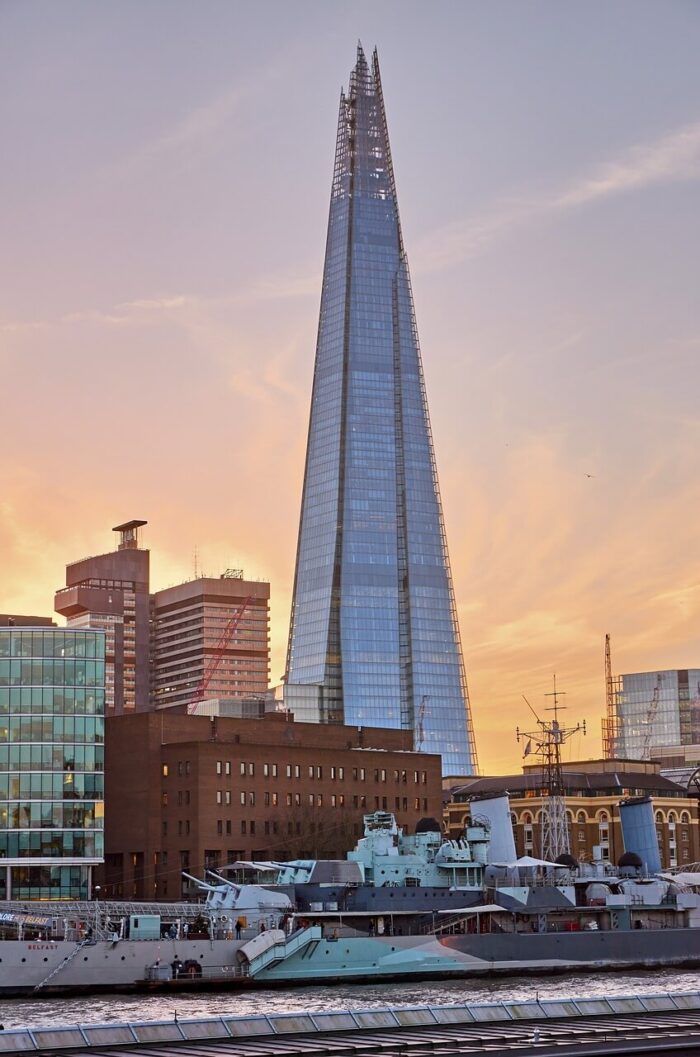
Did you know…?
The Shard serves as a prime illustration of the vertical city concept, consolidating diverse functions into its towering structure.
With 95 floors, this architectural marvel seamlessly incorporates offices, a hotel, residences, and public spaces, symbolizing the effective utilization of vertical space.
It transforms into a microcosm of urban living and work spaces stacked vertically, providing a condensed yet comprehensive experience of a modern city within a singular structure.
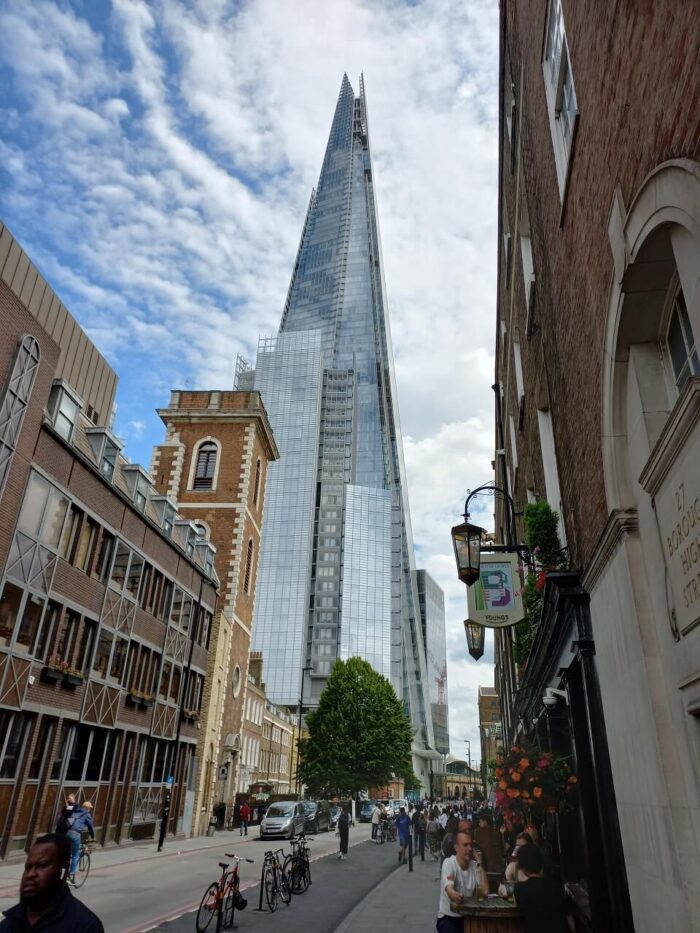
What is The Shard and why see it?
The Shard, proudly standing as the tallest skyscraper in Western Europe, is a captivating architectural masterpiece that graces the skyline of London.
Soaring to an impressive height of 310 meters (1,017 ft) and designed by the renowned architect Renzo Piano, this glass-clad structure, adorned with 11,000 panels, became accessible to the public in 2013.
Housing offices, restaurants, a luxurious hotel, and a public observation deck on the 72nd floor, The Shard offers unparalleled panoramic views of the city, creating a play of light and shadow with its pyramid-like structure.
Beyond its impressive stature and breathtaking views, The Shard symbolizes modern design innovation, seamlessly merging sustainability with contemporary aesthetics.
Drawing visitors with both rational appeal and emotional resonance, The Shard provides a unique vantage point for experiencing the cityscape, evoking a profound sense of awe suspended in the sky.
Whether seeking the thrill of ascending its heights or the emotional connection fostered by its panoramic perspectives, The Shard stands as a must-see place in London, transcending the ordinary and inviting visitors into an extraordinary urban narrative.
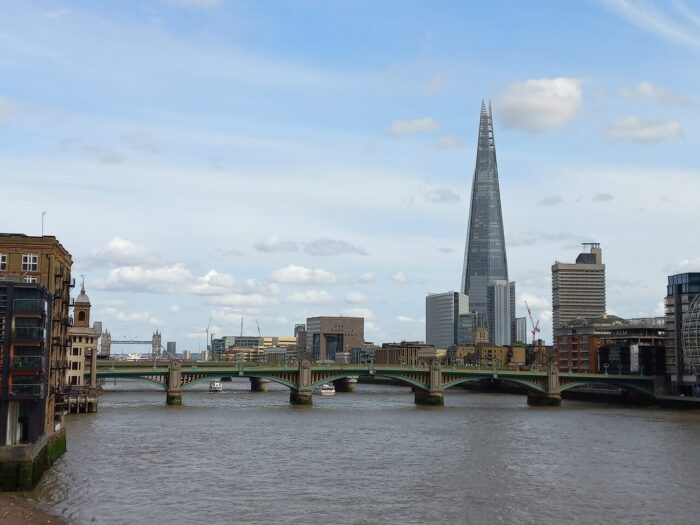
How to enjoy The Shard?
Getting to The Shard is a straightforward experience due to its central location and its visibility in London.
Positioned in the lively Southwark neighborhood, visitors can easily reach it using public transportation, with London Bridge station just a short walk away.
To optimize the visit, it’s recommended to pre-book tickets for the Shard’s observation deck, ensuring a more efficient and time-conscious experience. Choosing off-peak hours is advisable to avoid crowds and enjoy a more private visit.
As the Shard’s viewing platform is open-air, it’s important to be mindful of weather conditions and dress appropriately.
For a special touch, consider planning your visit during sunset to witness London’s transformation into a captivating panorama of lights.
Remember to bring your camera as The Shard offers exceptional photo opportunities, and capturing the cityscape at different times of the day enhances the overall experience.
Lastly, engage with the interactive telescopes available on the observation deck, providing intriguing details about the landmarks that adorn the London skyline.
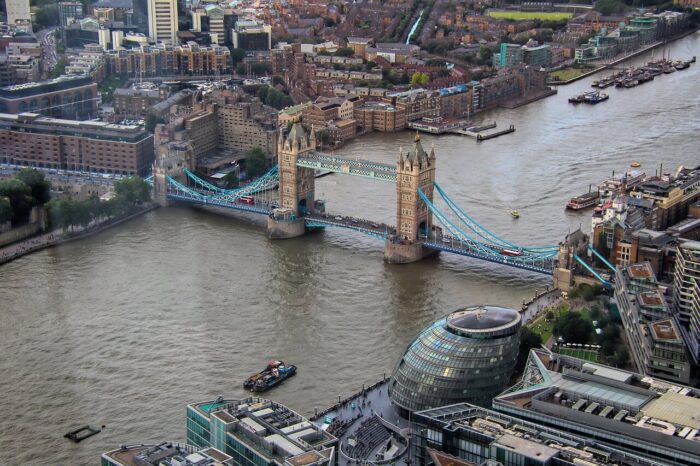
More information: The Shard website
Sky Garden
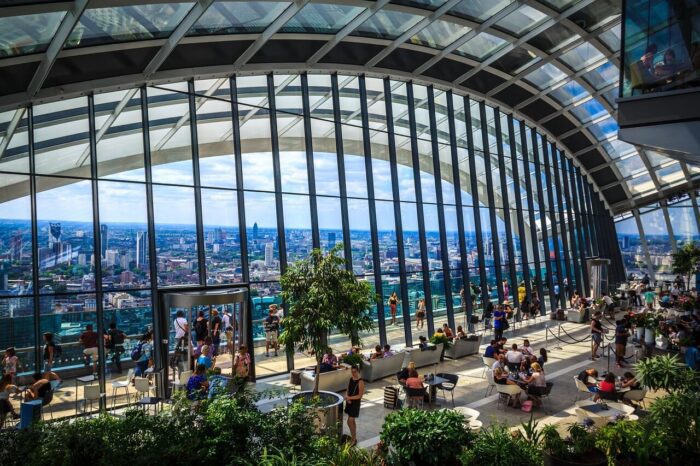
Did you know…?
Beneath the sleek glass and steel structure of Sky Garden lies a captivating secret – a state-of-the-art air circulation system that not only regulates the indoor climate but also contributes to the building’s sustainability.
Sky Garden employs an innovative air filtration system designed to naturally cleanse and circulate the air within the space.
This cutting-edge technology utilizes a combination of natural ventilation, advanced filters, and the strategic positioning of vents to enhance air quality.
Not only does this system create a comfortable environment for visitors, but it also underscores Sky Garden’s commitment to eco-conscious practices.
What is Sky Garden and why see it?
Sky Garden, nestled atop the Walkie Talkie building in the heart of London, stands as a unique and iconic attraction.
Boasting stunning panoramic views of the city, it encompasses a lush urban oasis housed within a contemporary glass structure.
What sets Sky Garden apart is its harmonious blend of a landscaped garden and public space, offering visitors an immersive experience surrounded by diverse flora.
The venue hosts observation decks, a terrace, and an array of dining options, making it a multifaceted destination.
Beyond its aesthetic appeal, Sky Garden is free to enter, enhancing its accessibility for both locals and tourists.
The awe-inspiring views of London’s skyline, coupled with the opportunity to stroll amidst vibrant greenery, contribute to the special allure of Sky Garden, making it a worthwhile visit for those seeking a unique and elevated perspective of the city.
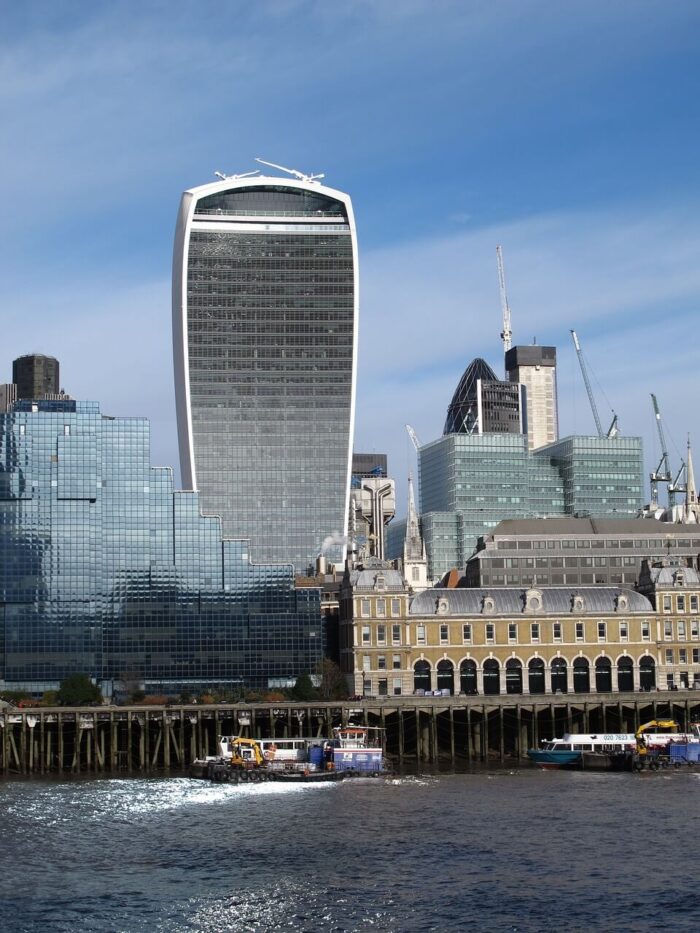
How to enjoy Sky Garden?
Tourists can reach the Walkie Talkie building, located at 20 Fenchurch Street, using the London Underground or buses, with the Monument or Bank stations in close proximity.
It’s recommended to check the Sky Garden website for information on visiting hours and to secure free tickets in advance, as entry is subject to availability.
Clear weather provides the best visibility for the panoramic views, so considering the weather forecast before planning a visit is advisable.
Once inside, tourists can make the most of their time by exploring the observation decks, terrace, and landscaped garden, as well as enjoying the diverse dining options available.
Being aware of the occasional need for security checks and adhering to the venue’s guidelines enhances the overall experience, allowing tourists to fully appreciate the special and breathtaking atmosphere that Sky Garden offers.
More information: Sky Garden website
The Thames
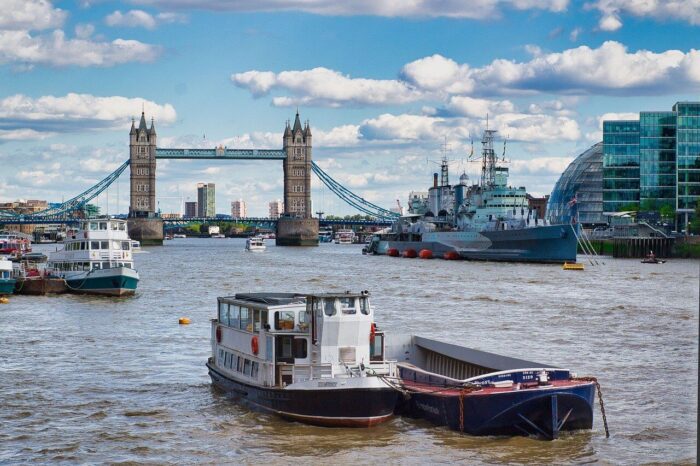
Did you know…?
Despite its urban setting, the Thames is home to a diverse array of marine life, including seahorses. Yes, seahorses in the heart of London!
These elusive creatures, often associated with tropical waters, have adapted to the river’s brackish conditions, with populations quietly thriving in select areas.
The Thames Seahorse Project, dedicated to monitoring and protecting these unexpected residents, sheds light on the unique biodiversity of this iconic waterway.
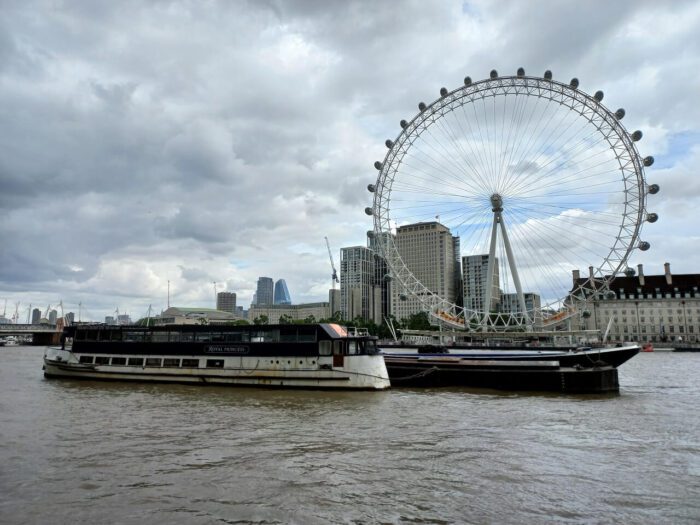
What is The Thames and why see it take a boat ride along?
The Thames, England’s most iconic river, is a winding watercourse that gracefully flows through the heart of London, offering a unique blend of natural beauty and historical significance.
Spanning over 200 miles, the Thames has played a pivotal role in shaping the capital’s identity and development.
Its waters have witnessed centuries of history, from medieval trade to the vibrant cultural scenes of today.
The allure of the Thames lies not only in its scenic charm but also in the myriad landmarks adorning its banks, including the Tower of London, the Houses of Parliament, and the London Eye.
Taking a boat ride along the Thames provides a distinctive perspective, allowing visitors to marvel at the city’s skyline from a tranquil vantage point.
Whether cruising past historic landmarks or gliding beneath modern bridges, a Thames boat ride encapsulates the essence of London’s history and contemporary vibrancy, making it a special and worthwhile experience for anyone seeking to immerse themselves in the heart of this dynamic city.
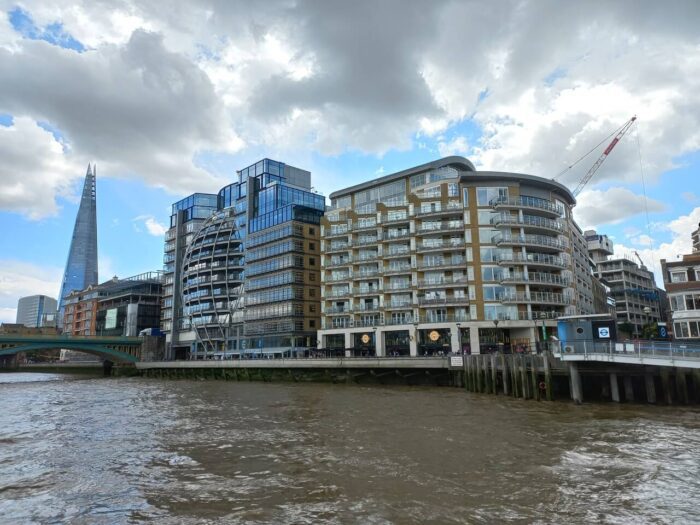
How to enjoy The Thames?
Visitors can access popular embarkation points such as Westminster Pier, Tower Pier, or Greenwich Pier using the London Underground or buses.
However, it is advisable to check the boat schedules in advance, as they may vary depending on the chosen service. Being mindful of peak hours and planning boat rides during quieter times can enhance the overall experience.
Tourists should consider purchasing tickets online for convenience and potential discounts.
While on the boat, taking note of the historical commentary offered by many cruise operators enriches the journey, providing insights into the landmarks and history lining the riverbanks.
Moreover, dressing warmly, especially during the cooler months, ensures a comfortable and enjoyable boat ride along the Thames, allowing visitors to fully appreciate the scenic beauty and historical grandeur of this iconic waterway.
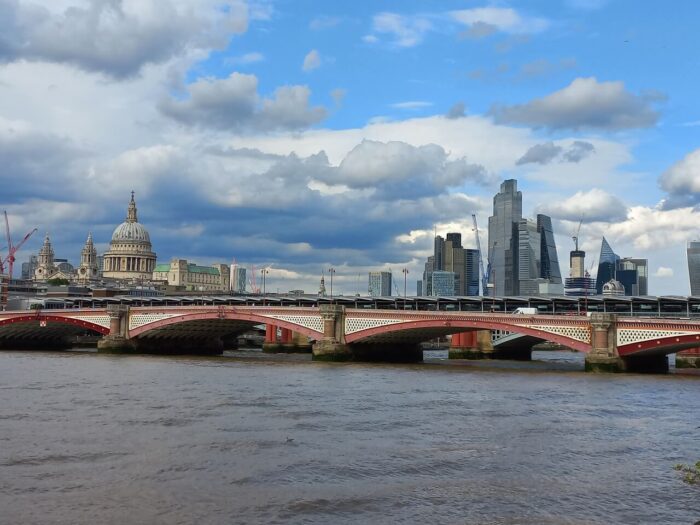
Tower of London and Tower Bridge
These two are related and so close together that I decided to put them under one entry…
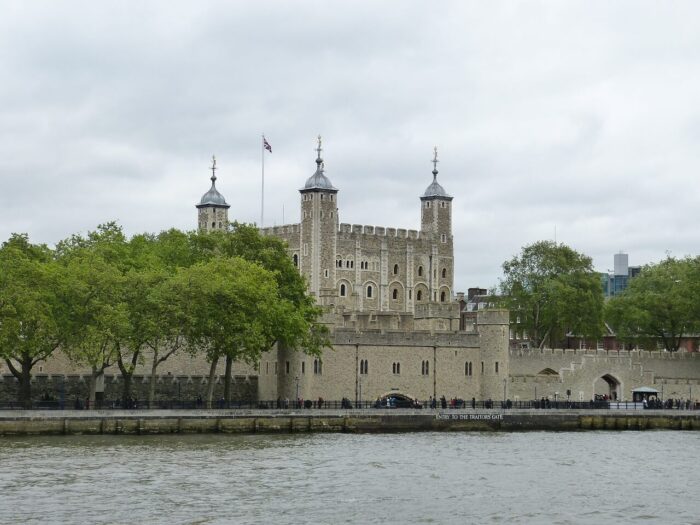
Did you know…?
The Tower of London and Tower Bridge harbor a lesser-known connection that adds an intriguing layer to their shared history.
Despite their distinct purposes—one a historic castle, the other a majestic bascule and suspension bridge—the two landmarks are linked by a subterranean passageway.
Beneath the Thames’ waterline lies a hidden pedestrian tunnel that connects the Tower of London to Tower Bridge.
This passage, used by staff and officials, served as a discreet means of movement between the two iconic structures.
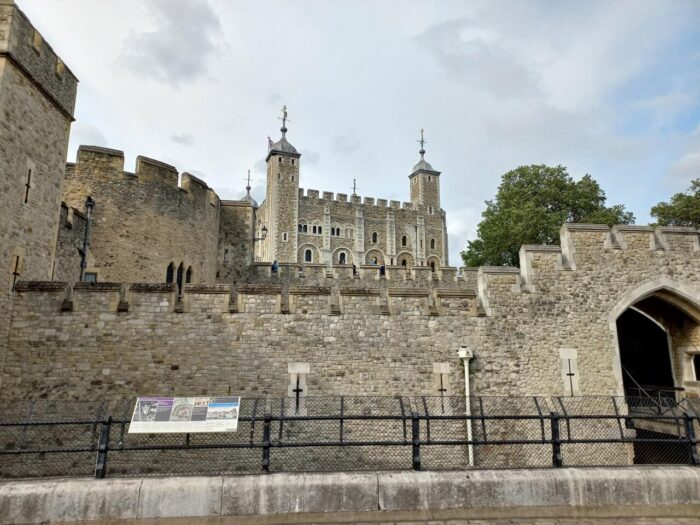
What is Tower of London and why see it?
The Tower of London, a UNESCO World Heritage Site is situated on the banks of the River Thames. It is a historic fortress that spans nearly 1,000 years of English history.
Its iconic White Tower, constructed by William the Conqueror in the 11th century, stands as a testament to its medieval origins.
Renowned for housing the Crown Jewels, the Tower of London has served as a royal residence, a prison, and an armory.
The complex includes the Bloody Tower, the Medieval Palace, and the iconic Traitors’ Gate, each contributing to the rich tapestry of stories within its walls.
The Tower’s historical significance, architectural marvels, and the allure of its ghostly legends make it a captivating destination.
Visitors can delve into the past by exploring its chambers, witnessing the Ceremony of the Keys, and marveling at the architectural grandeur of this fortress that has played a pivotal role in England’s history.
The Tower of London is a must-visit for those seeking an immersive journey through the annals of British heritage.
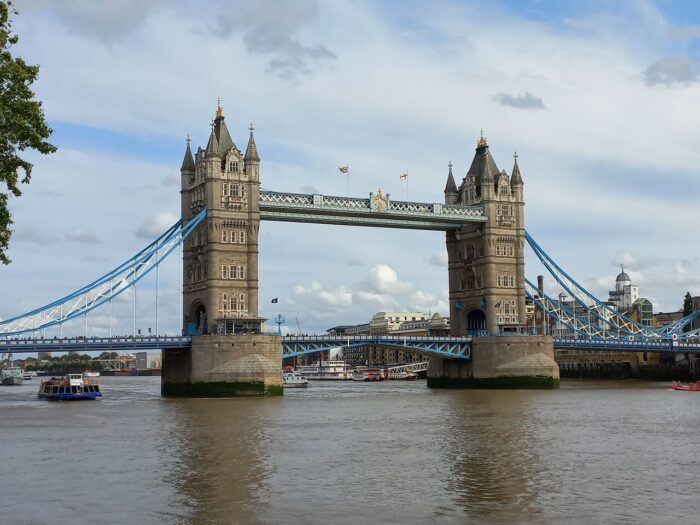
What is Tower Bridge and why see it?
Tower Bridge, an iconic symbol of London, stands majestically over the River Thames, connecting the neighborhoods of Tower Hamlets and Southwark.
Completed in 1894, its unique combination of a bascule and suspension bridge design sets it apart.
The bridge is characterized by its twin towers, linked by a high-level walkway, which offers panoramic views of the city.
What makes Tower Bridge particularly special is its operational bascules, designed to lift and allow maritime traffic to pass beneath.
The Gothic-style architecture, adorned with ornate detailing, contributes to its aesthetic appeal.
Visitors can explore the Tower Bridge Exhibition, housed within the towers, to learn about the bridge’s history and engineering marvels.
The proximity to the Tower of London adds to its historical significance, creating a captivating backdrop.
Tower Bridge is not only an essential part of London’s transportation infrastructure but also a cultural and architectural gem that invites exploration and appreciation of the city’s rich heritage.
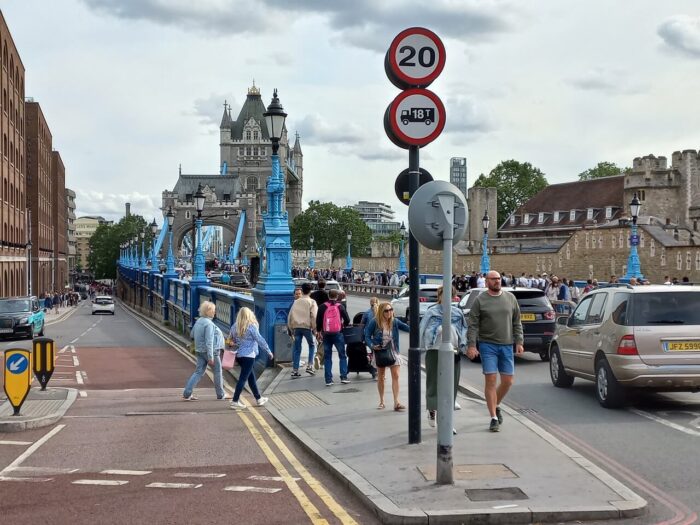
How to enjoy Tower of London and Tower Bridge?
Both landmarks are conveniently accessible via the London Underground, with Tower Hill Station serving as the nearest stop.
Visitors can also opt for buses or even enjoy a scenic stroll along the Thames Path to reach these iconic sites.
To make the most of the experience, tourists should allocate sufficient time to explore the Tower of London’s extensive grounds, including the Crown Jewels and the medieval White Tower.
Additionally, exploring the Tower Bridge Exhibition provides insights into the bridge’s engineering marvels.
To capture the essence of these historic landmarks, visiting during weekdays or quieter times can enhance the overall enjoyment. It will allow tourists to absorb the rich history and architectural grandeur of the Tower of London and Tower Bridge.
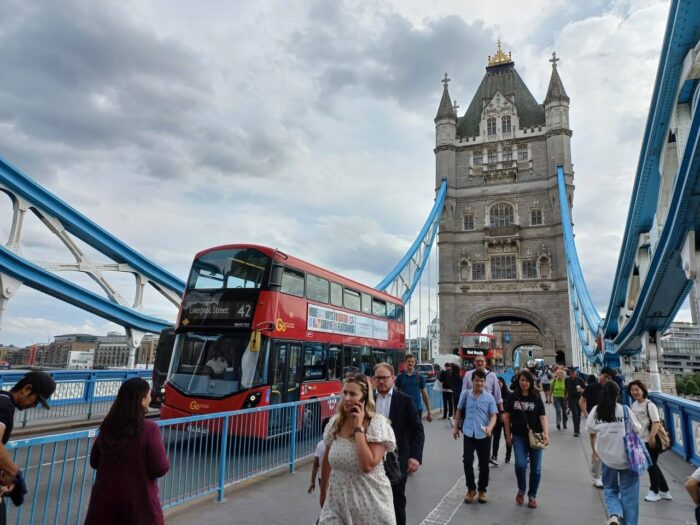
Conclusion
This list of places to see in London is far from complete.
But especially if you have limited time in the city, feel free to pick something from this list.
Happy travel
M
My top places to visit in London
- Borough Market
- Camden Town
- Covent Garden
- City of Westminster
- Docklands
- The Regent’s Park
- The Shard
- Sky Garden
- The Thames
- Tower of London and Tower Bridge
London useful links
London Travel Guides at AmazonLooking for more inspiration for places to visit?
The Best Of Europe: Top 10 Iconic Cities To Visit?
The Best Of North America: Your Ultimate Guide To 10 Most Vibrant Cities?

